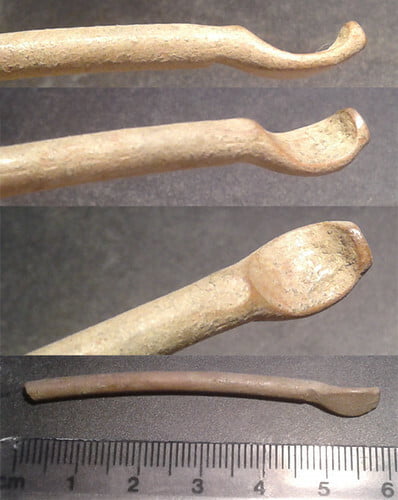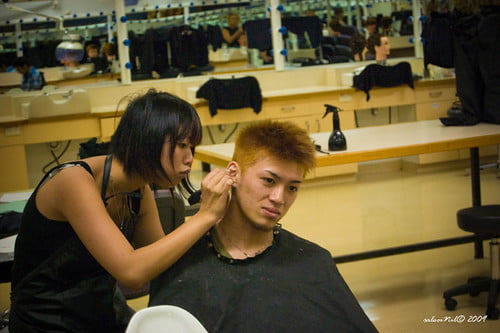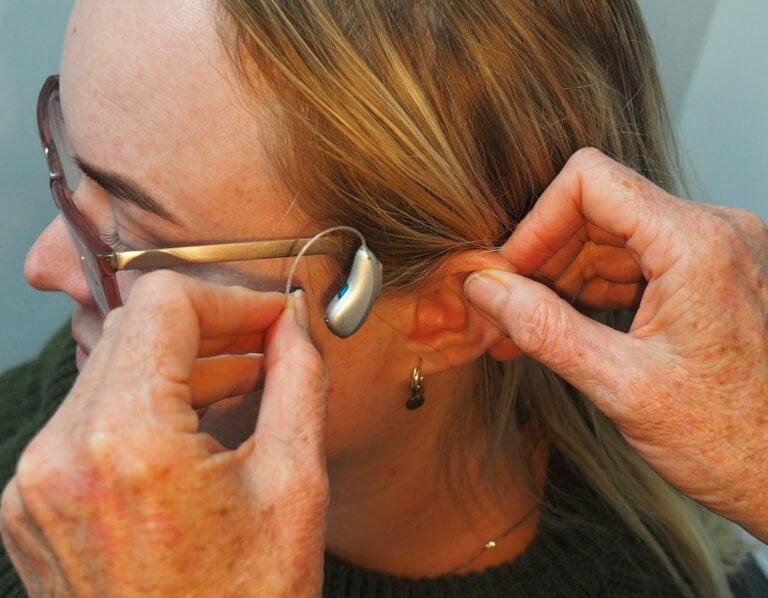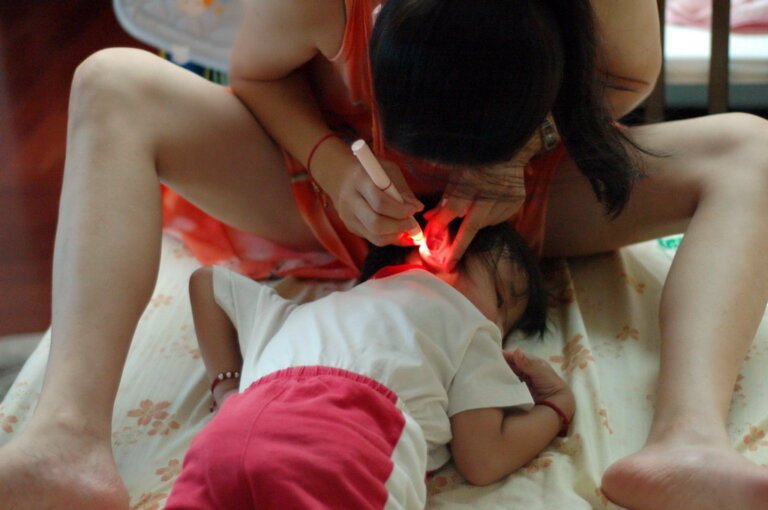Seizing Opportunities: How to Find an Apprenticeship in Manual Instrument Ear Wax Removal
Last Updated on 25th April 2024 by Admin
Finding an apprenticeship in manual instrument ear wax removal can be an exciting and rewarding career path. This specialized field requires individuals with a keen interest in ear health, excellent manual dexterity, and a passion for helping others. In this article, we will explore the steps you can take to find an apprenticeship in manual instrument ear wax removal.
1. Research the Field
Before embarking on your journey to find an apprenticeship, it’s important to understand the field of manual instrument ear wax removal.
Paragraph 1: Educate yourself about the different techniques, tools, and procedures involved in manual instrument ear wax removal. Understand the various methods used to remove ear wax, such as curettage, suction, and irrigation. Familiarize yourself with the tools commonly used, including ear curettes, suction devices, and irrigation systems. By gaining knowledge about these techniques and tools, you will be better prepared to pursue an apprenticeship and excel in this field.
Paragraph 2: Additionally, it is crucial to familiarize yourself with the anatomy of the ear and the common issues surrounding ear wax buildup. Learn about the structure of the ear, including the ear canal and the tympanic membrane. Understand the factors that contribute to excessive ear wax production, such as genetics, age, and certain medical conditions. This understanding will enable you to provide informed care to patients and address their specific needs during the apprenticeship and in your future career.
Paragraph 3: Furthermore, research the potential risks and complications associated with manual instrument ear wax removal. Understand the signs of ear wax impaction and the symptoms that may indicate the need for intervention. Learn about the precautions and safety measures that should be taken to ensure the well-being of patients during the procedure. This knowledge will not only help you during your apprenticeship search but also in your future career as a manual instrument ear wax removal specialist.
2. Connect with Professionals
Networking is an essential part of finding an apprenticeship.
Paragraph 1: Reach out to professionals in the field of audiology, otolaryngology, and manual instrument ear wax removal. Attend conferences, workshops, and seminars where you can meet experts and gain valuable insights. Engage in conversations with these professionals to learn about their experiences, challenges, and advice for aspiring apprentices. Building relationships with individuals who are already established in the field can provide you with valuable mentorship and potentially open doors to apprenticeship opportunities.
Paragraph 2: In addition to attending industry events, consider joining professional organizations related to audiology and otolaryngology. These organizations often offer networking platforms and resources for individuals interested in manual instrument ear wax removal. Take advantage of online forums, discussion boards, and social media groups to connect with professionals and engage in conversations about the field. By actively participating in these communities, you can expand your network and stay updated on industry news and opportunities.
Paragraph 3: Another effective way to connect with professionals is by reaching out to local clinics and practitioners who specialize in manual instrument ear wax removal. Request informational interviews or shadowing opportunities to gain firsthand experience in the field. By observing professionals in action and engaging in conversations with them, you can gain valuable insights into the day-to-day responsibilities and challenges of the job. These interactions may also lead to potential apprenticeship opportunities or recommendations from professionals who are familiar with your dedication and enthusiasm.
3. Seek Apprenticeship Programs
Look for apprenticeship programs specifically designed for manual instrument ear wax removal.
Paragraph 1: These programs are often offered by specialized clinics, hearing centers, or ear, nose, and throat (ENT) clinics. Research online to identify organizations or institutions that provide apprenticeship programs in your area. Check their websites for information on program duration, curriculum, and application requirements. Reach out to program coordinators or administrators to express your interest and request additional information.
Paragraph 2: Additionally, consider contacting local hospitals or medical facilities to inquire about any apprenticeship programs they may offer. Some hospitals have dedicated ear care departments or partnerships with specialized clinics, making them potential sources of apprenticeship opportunities. Speak with human resources representatives or department heads to inquire about apprenticeship availability and application procedures.
Paragraph 3: Professional organizations related to audiology and otolaryngology may also provide information on apprenticeship programs. Check their websites, newsletters, or membership resources for any listings or announcements regarding apprenticeships. These organizations often have established connections with clinics and practitioners in the field and can guide you to valuable apprenticeship opportunities.
4. Contact Local Ear Care Centers
Approach local ear care centers and inquire about any available apprenticeship opportunities.
Paragraph 1: Many clinics and centers offer apprenticeships to individuals interested in pursuing a career in manual instrument ear wax removal. Research and compile a list of ear care centers in your area. Contact them via phone or email to introduce yourself, express your interest, and inquire about any existing or upcoming apprenticeship openings. Provide a brief overview of your background, skills, and passion for the field to demonstrate your commitment and enthusiasm.
Paragraph 2: Even if the ear care centers do not have immediate openings, leave your contact information and ask them to keep you in mind for future opportunities. Building relationships with these centers may lead to future apprenticeship possibilities or recommendations to other clinics or practitioners who have openings. Be proactive in following up with these centers periodically to stay on their radar and showcase your continued interest.
Paragraph 3: Additionally, consider offering your assistance on a volunteer basis at local ear care centers. While this may not be a formal apprenticeship, it can provide valuable hands-on experience and an opportunity to network with professionals in the field. Volunteering allows you to demonstrate your dedication, work ethic, and willingness to learn, which may increase your chances of being considered for future apprenticeship positions.
5. Create a Strong Resume
Crafting a well-structured and comprehensive resume is vital when applying for an apprenticeship.
Paragraph 1: Start by highlighting your relevant skills, experiences, and educational background. Include any previous healthcare or medical training you have received. Emphasize any certifications or courses you have completed related to ear health or manual instrument ear wax removal. Provide details about any clinical or practical experiences you have had, such as shadowing professionals or volunteering at ear care centers. These experiences showcase your exposure to the field and your dedication to pursuing a career in manual instrument ear wax removal.
Paragraph 2: Tailor your resume to showcase your passion for the field and your dedication to providing excellent patient care. Highlight any customer service or patient interaction experiences you have had, as these skills are essential in manual instrument ear wax removal. Include any relevant achievements or accomplishments that demonstrate your ability to work effectively in a team and your commitment to delivering high-quality care.
Paragraph 3: Ensure that your contact information is easily accessible at the top of your resume. Include your full name, phone number, email address, and any professional social media profiles you have that are relevant to your career pursuits. Double-check your resume for any grammatical or spelling errors and ensure that the formatting is clean and professional. A well-crafted resume will make a positive impression on potential apprenticeship providers and increase your chances of securing an opportunity.
6. Prepare for Interviews
When you secure an interview for an apprenticeship position, it is crucial to be prepared.
Paragraph 1: Research common interview questions related to manual instrument ear wax removal and the field of audiology. Practice your responses to these questions, ensuring that you can articulate your knowledge and passion for the field. Be prepared to discuss your understanding of manual instrument ear wax removal techniques, tools, and safety protocols. Demonstrate your motivation to pursue a career in this field and your eagerness to learn and grow as an apprentice.
Paragraph 2: In addition to technical knowledge, showcase your interpersonal skills during the interview. Manual instrument ear wax removal often involves working closely with patients, and effective communication and empathy are crucial. Prepare examples of situations where you have demonstrated excellent interpersonal skills, such as resolving conflicts or providing emotional support. Highlight your ability to work effectively in a team, as collaboration and coordination are essential in providing comprehensive patient care.
Paragraph 3: Dress professionally for the interview and arrive early to make a positive first impression. Bring copies of your resume, certifications, or any other relevant documents to provide to the interviewers, if requested. Prepare thoughtful questions to ask the interviewers about the apprenticeship program, the learning opportunities available, and the expectations for apprentices. This demonstrates your genuine interest in the position and your proactive approach to learning and professional development.
7. Stay Updated on Industry Advancements
As technology and techniques in manual instrument ear wax removal continue to evolve, it is essential to stay updated on industry advancements.
Paragraph 1: Attend workshops, seminars, and webinars to learn about the latest trends and innovations in manual instrument ear wax removal. These educational events provide opportunities to enhance your skills, gain insights from experts, and network with other professionals in the field. Stay informed about upcoming events by subscribing to relevant industry newsletters, following professional organizations on social media, or joining online communities focused on audiology and otolaryngology.
Paragraph 2: Read industry publications, research papers, and journals to stay abreast of the latest research and advancements in manual instrument ear wax removal. These resources provide valuable information on emerging techniques, new tools, and best practices in the field. Consider subscribing to reputable publications or setting up alerts for relevant keywords to ensure you receive timely updates.
Paragraph 3: Actively seek opportunities for continuous education and professional development in manual instrument ear wax removal. Pursue advanced certifications or specialized courses that focus on specific aspects of the field, such as advanced ear cleaning techniques or the safe use of new technologies. By investing in your ongoing education, you demonstrate your commitment to providing the best possible care to patients and positioning yourself as a valuable asset in the field.
Conclusion
Finding an apprenticeship in manual instrument ear wax removal requires dedication, passion, and a commitment to learning.
By researching the field, connecting with professionals, seeking apprenticeship programs, contacting local ear care centers, creating a strong resume, preparing for interviews, and staying updated on industry advancements, you can increase your chances of securing a valuable apprenticeship opportunity. Remember, this is just the beginning of your journey towards a fulfilling career in manual instrument ear wax removal.
Please note that the formatting of the complete article may not be accurately represented in markdown format.
Q1: What should I research before finding an apprenticeship in manual instrument ear wax removal?
Before finding an apprenticeship, it is important to educate yourself about the different techniques, tools, and procedures involved in manual instrument ear wax removal. Additionally, familiarize yourself with the anatomy of the ear and the common issues surrounding ear wax buildup. Lastly, research the potential risks and complications associated with manual instrument ear wax removal.
Q2: How can I connect with professionals in the field of manual instrument ear wax removal?
To connect with professionals in the field, you can attend conferences, workshops, and seminars where you can meet experts and gain valuable insights. Joining professional organizations related to audiology and otolaryngology can also provide networking platforms. Another effective way is to reach out to local clinics and practitioners who specialize in manual instrument ear wax removal and request informational interviews or shadowing opportunities.
Q3: What should I do to seek apprenticeship programs in manual instrument ear wax removal?
To seek apprenticeship programs, you can research specialized clinics, hearing centers, or ear, nose, and throat (ENT) clinics that offer such programs. Contact local hospitals or medical facilities to inquire about any apprenticeship programs they may have. Additionally, professional organizations related to audiology and otolaryngology may provide information on apprenticeship programs.
Q4: How can I approach local ear care centers to inquire about apprenticeship opportunities?
To approach local ear care centers, research and compile a list of ear care centers in your area. Contact them via phone or email to introduce yourself, express your interest, and inquire about any available apprenticeship openings. Even if there are no immediate openings, leave your contact information and ask them to keep you in mind for future opportunities. Consider offering your assistance on a volunteer basis at local ear care centers to gain valuable hands-on experience and network with professionals in the field.







